Sony enriches its range of Bluetooth speakers with the SRS-XE200, a model equipped with in-house transducers, which inaugurates a new slender diffuser. Unlike the Extra Bass SRS-XB series models, this XE model does not have bass reinforcement or a festive light system. The design changes radically and the impact on the sound is surprising.
Two years after the launch of the SRS-XB33 and 43, Sony is adding two new portable Bluetooth speaker references to its catalog. The Sony SRS-XE200 and SRS-XE300 are aimed at the same audience and target the same field of application, ie music broadcasting at home or outside, regardless of weather conditions. The Sony SRS-XE300, much larger than the XE200, is a 2-way model (with tweeters), while the more compact and easy-to-carry Sony SRS-X200 makes do with a pair of full-range stereo speakers . It is the latter that we tested.
Sony SRS-XE200Technical sheet
7 /10

This test was carried out with a loudspeaker lent by the manufacturer.
Sony SRS-XE200Design
Sony innovates and delivers with the SRS-XE200, its first pentagonal or almost hexagonal Bluetooth speaker. Indeed, this enclosure has five large faces through which no sound filters, and a vertical front slot with acoustic diffuser, housed between its two front side faces. Another novelty, the enclosure has a cord to be more easily transported or suspended. The Sony SRS-XE200, which can be positioned either vertically or horizontally, is largely covered in soft silicone, with sound-diffusing areas protected by wide-mesh acoustic fabric. In the coral orange livery that Sony lent us, this fabric is two-tone, with pale orange accents.

The control buttons are housed on the right side and mostly associated with status LEDs, while the rear side houses a hatch that protects the USB-C charging port from dust and water. The Sony SRS-XE200 is also IP67 certified, which allows you to take it to the beach without fear of damaging it in the sand, and even to immerse it completely in water. Unlike the SRS-XB (32/42/33/43) series speakers, it does not have any festive lighting LEDs.
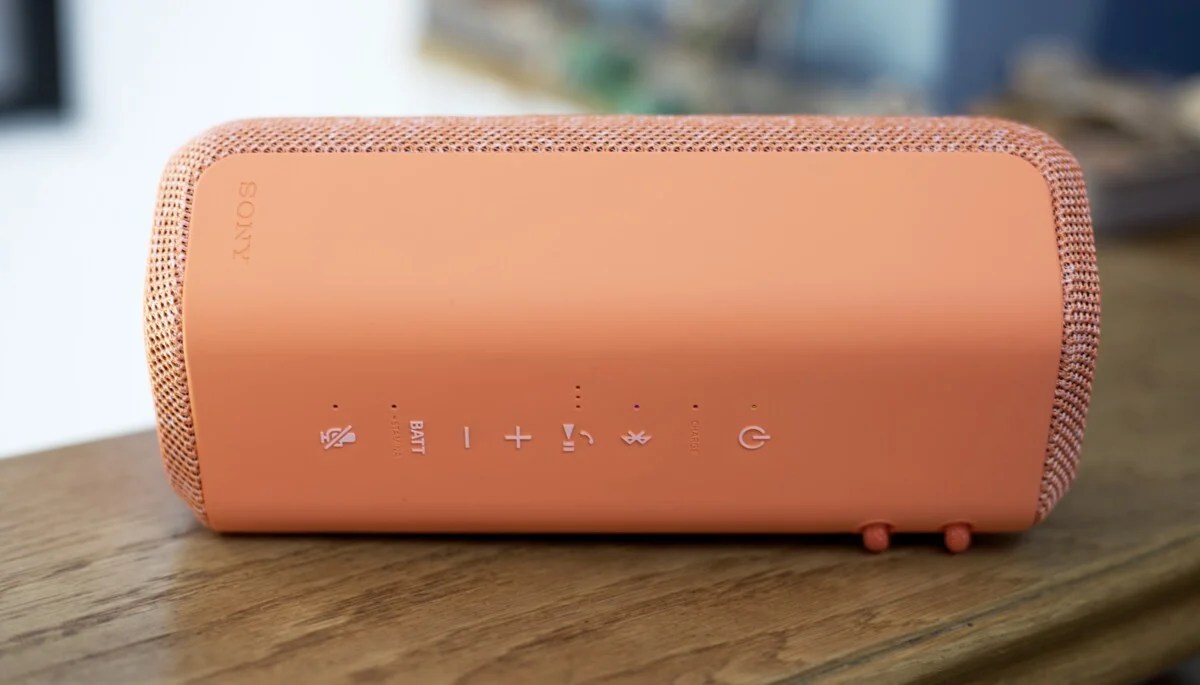
Finally, the Sony SRS-XE200 measures almost 21 cm long and 9 cm wide. ” diameter “ approximately and weighs 800 grams.
Sony SRS-XE200Use and application
Little surprise, the speaker tends to slip in the hand when you grab it, the fault of the slightly slippery silicone coating and, above all, majority on the surface. Nothing too bad, especially since the strap compensates for this small defect. As is often the case with Sony speakers, the control buttons are raised and therefore easy to identify, which is practical if you are dozing in the park or at the beach, listening to music. They are also easy to press and a click confirms the taking into account of the commands. No less than 7 buttons are present: power on and off, Bluetooth association, play/pause and audio call acceptance, volume (+/-), battery status and activation/deactivation of the microphone. Nothing is missing.
Advanced functions in the control application
It is the Sony Music Center application that gives access to the advanced settings of the speaker, in particular power options (automatic standby, Stamina mode to preserve autonomy, interaction sounds, etc.) and sound settings. As the SRS-XE200 does not have Extra Bass technology, this option does not appear in the app and only a 3-band equalizer is offered to adjust the sound of the speaker.

The Sony Music Center app

Attention, the stereo must be activated manually because the speaker is configured in mono by default.

Advanced power options.
The quality of the Bluetooth connection can be adjusted, which is especially of interest with Android smartphones when the LDAC codec is active, in order either to favor connection stability, or to take advantage of the highest data rate. After verification, the impact is imperceptible.
Bluetooth range up to 30 meters
The Sony SRS-XE200 is Bluetooth multipoint compatible, which allows it to be used with two sources simultaneously (smartphone, tablet, computer, etc.). The Google Fast Pair protocol is supported, to facilitate pairing with Android smartphones. Throughout this test, indoors and outdoors, the connection was stable up to 10 meters and through a wooden floor.
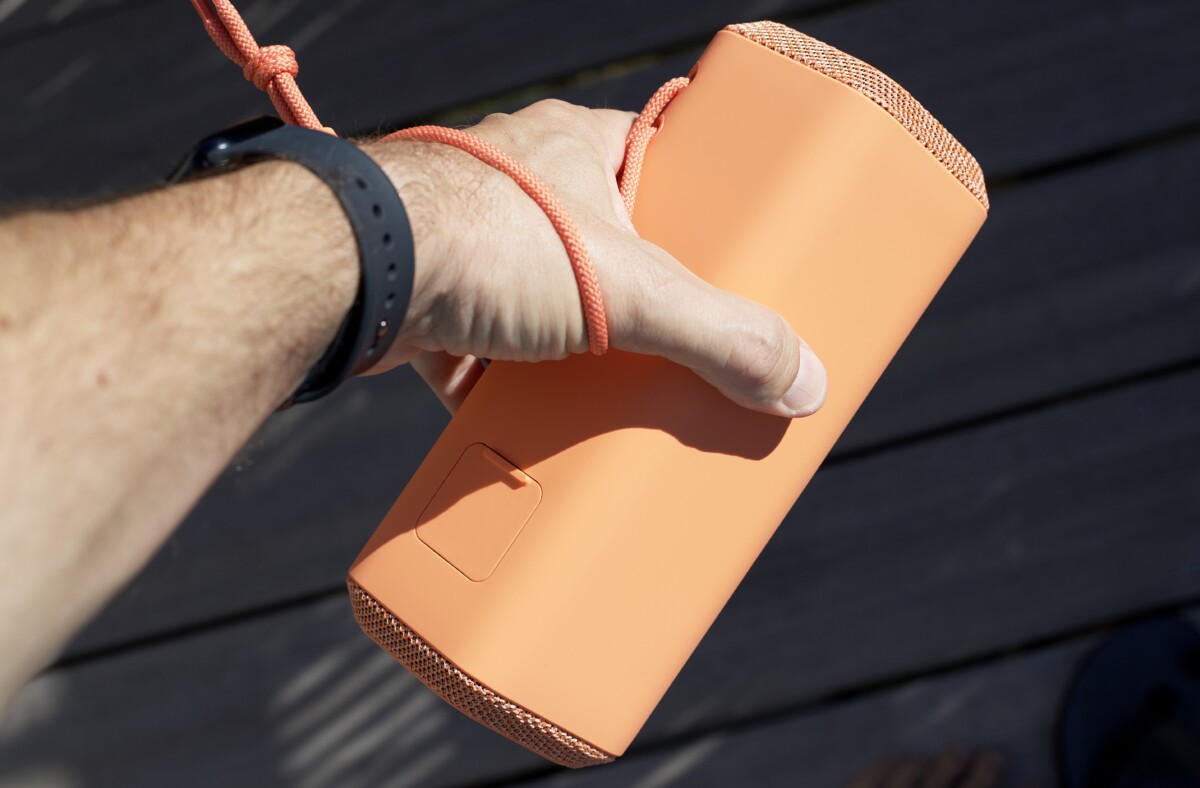
Sony announces reception up to 30 meters, but this is only possible outdoors or in an unobstructed environment. Finally, the Bluetooth 5.2 controller supports SBC, AAC and LDAC codecs.
Sony SRS-XE200Audio
The acoustic solution implemented by Sony has not fundamentally changed compared to the Sony SRS-XB33: there are therefore two broadband loudspeakers with a 5×4 cm plastic membrane, associated with two passive radiators. As a reminder, passive radiators make it possible to increase the volume of low frequencies without increasing the volume of the speaker, and also to play at lower frequencies. Active transducers are also freed from the reproduction of the lowest frequencies and can work better on the rest of the audio spectrum.
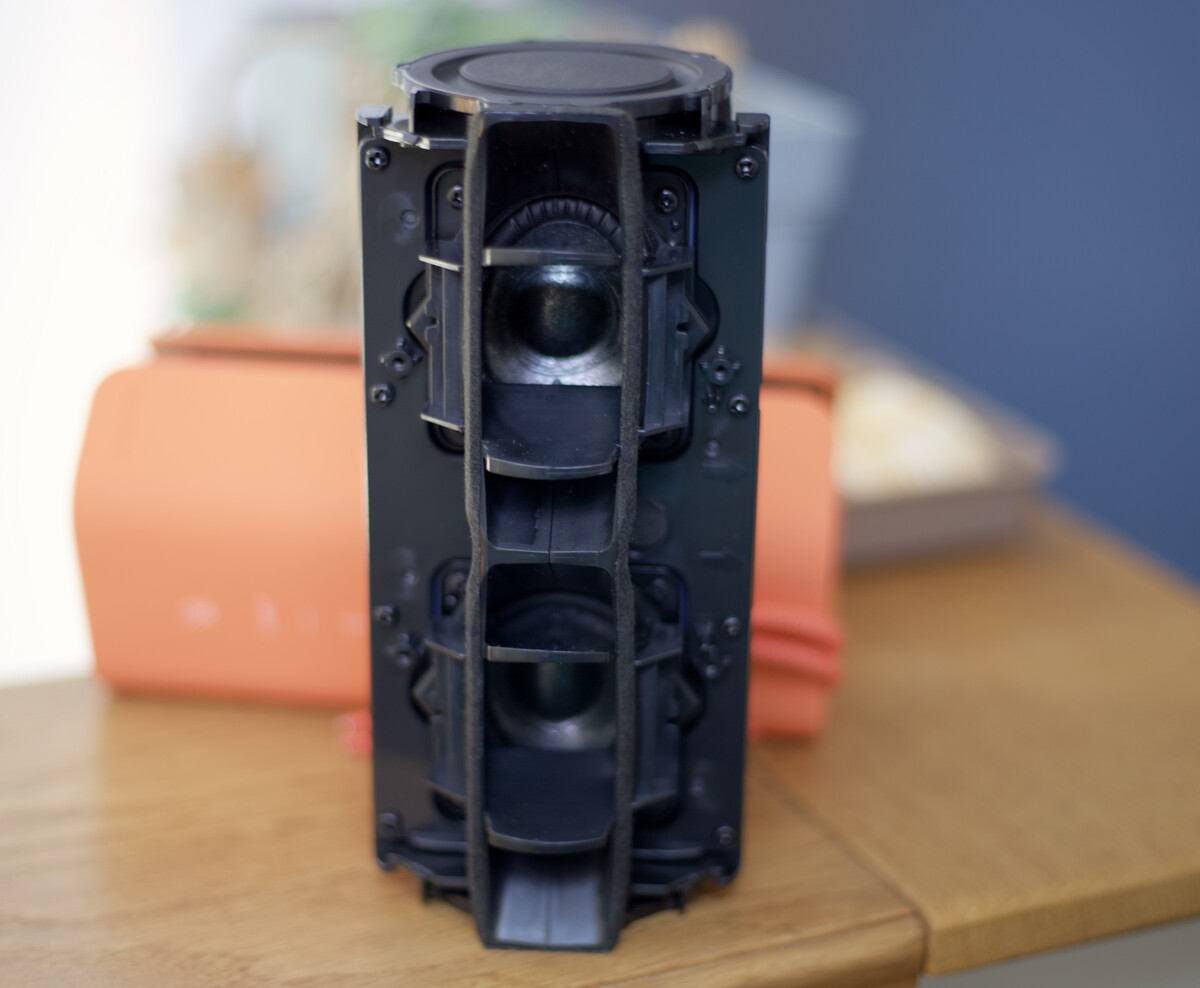
However, Sony has innovated and installed a “slender diffuser” in front of the transducers of the SRS-XE200, supposed to promote a more homogeneous distribution of sound and “cover the whole room” according to the manufacturer. The approach is surprising, because the Sony SRS-XB32 or 33 Bluetooth speakers, with the same broadband transducers “naked” have a particularly wide scattering angle. Furthermore, dismantling the enclosure reveals a room more like an acoustic horn, whose usual role is to concentrate, to mechanically amplify, the frequencies of the midrange.
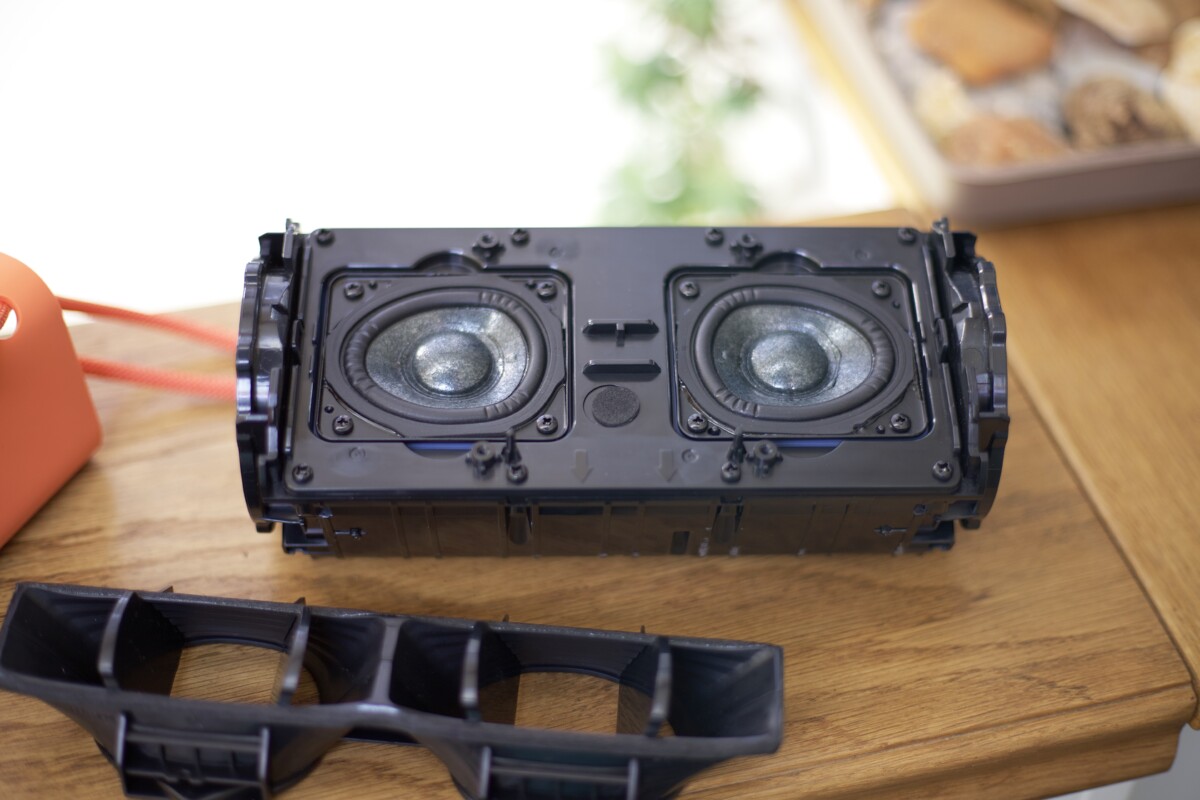
In short, the Sony SRS-XE200 should play a little louder thanks to this device, but not broadcast more widely (on the contrary). Finally, the diffuser does not completely cover the transducers and part of the sound will inevitably wander between the surface of the internal structure and the shell. In short, this implementation leaves doubtful.
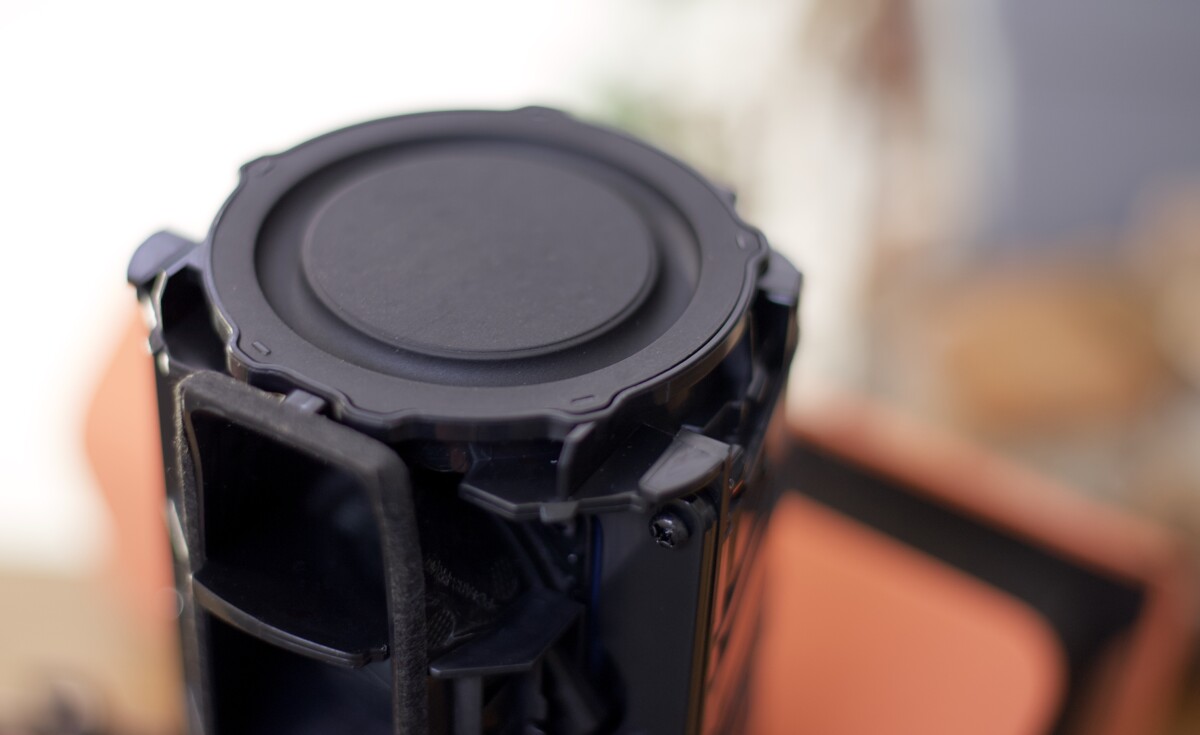
Another surprise: the passive radiators are obstructed by the side walls of the enclosure, the low frequencies only escaping through thin openings behind the acoustic fabric. What to leave, here too, circumspect, as this implementation can only reduce the performance of passive transducers… and therefore the performance in the bass. The form does not seem to serve the function. Finally, the on-board amplification delivers up to 20 W, which is more than enough.
Test setup
I listened to the Sony SRS-XE200 speaker with an iPhone 13 Pro Max (AAC) and a Xiaomi Mi 11 Lite 5G (LDAC), from Apple Music. No difference is audible between these smartphones, despite the use of different codecs.
Signature sound
The tonal balance of the Sony SRS-XE200 is rather neutral, with a hint of brightness in the particularly lively high register. The loudspeaker gives off a soft sound, almost tender in the bass, whose extension and volume are limited. It’s a shame, especially since this speaker will be used outdoors and its low frequencies will then be even less noticeable. However, the restitution is balanced, whatever the music played.
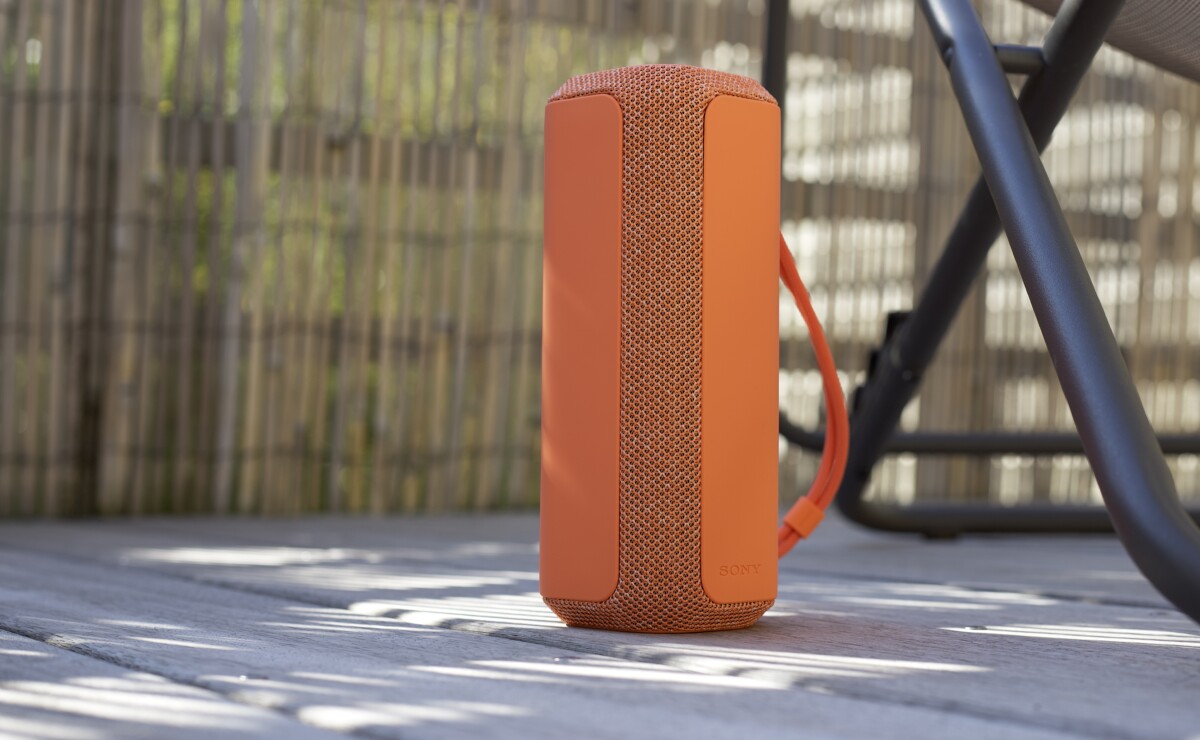
A rather pleasant sound signature therefore, but not very catchy, unlike the Sony SRS-XB33 in particular. The equalizer integrated into the Sony app does not allow this character trait to be changed.
- Bass: lack of amplitude and texture, prominence of the high bass which masks the lowest frequencies, especially when the loudspeaker is positioned vertically
- Medium: soft and precise, a little tainted by the high bass
- Treble: prominent and flattering, the best of the three registers
Good point: the tonal balance remains the same beyond 50% volume and the speaker only breaks apart beyond 90%.
Dynamic behavior and soundstage
The Sony SRS-XE200 struggles to ignite and you really have to turn up the volume to enjoy a more or less dynamic sound. At low volume, the reproduction is sorely lacking in detail. To make matters worse, the soundstage is tight, especially in a vertical position and even when activating the stereo mode in the app (by default, the speaker works in mono). The SRS-XE200 therefore fails where the SRS-XB33 succeeded so well… yet with the same transducers.
Sony SRS-XE200Microphone
Good point, the Sony SRS-XE200 is equipped with a microphone to make phone calls. The quality of voice capture is good and you can hear your interlocutor well. Mission accomplished from this point of view.
Sony SRS-XE200Autonomy
Sony announces a maximum autonomy of 16 hours, which is probably true if you use the speaker at less than half its volume. Connected to an iPhone and at 50% volume, the Sony SRS-XE200 lasted around 2:30 p.m. It takes about 2 hours to recharge the speaker (with a Power Delivery charger, it accepts 10 W of power) and only 10 minutes to recover a good hour of battery life.
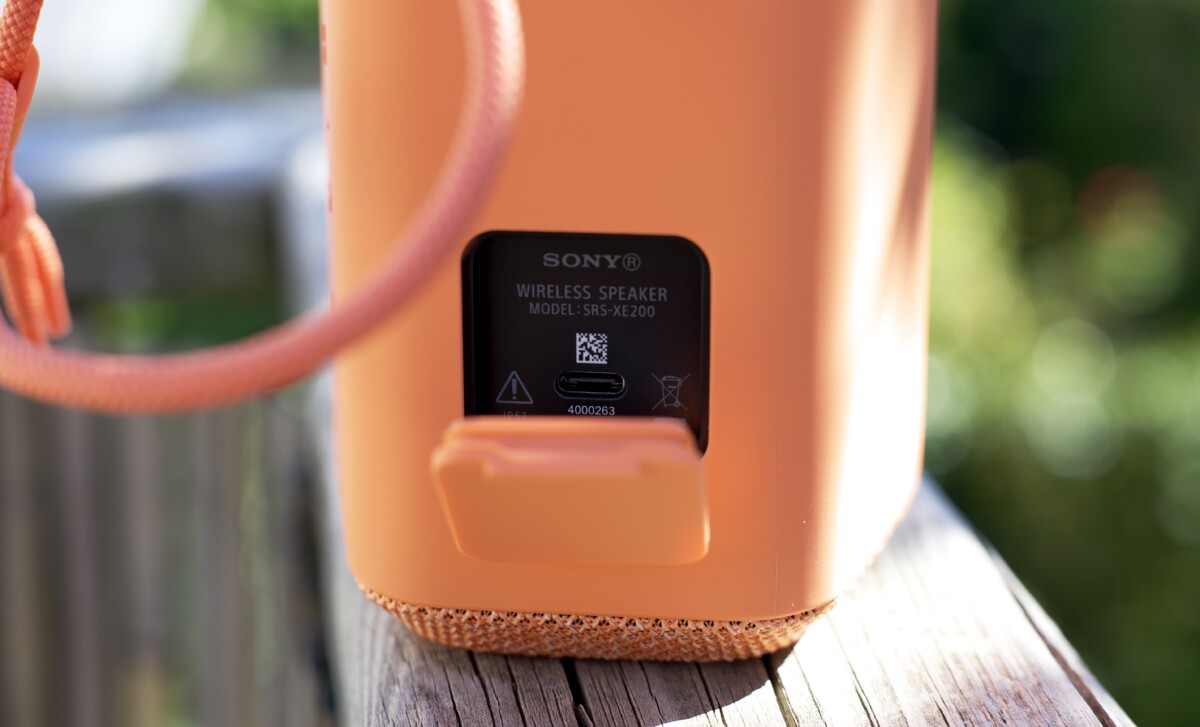
In absolute terms, this autonomy is more than honorable and suggests very long listening sessions.
Sony SRS-XE200Price and release date
The Sony SRS-XE200 speaker is available in Coral Orange, South Seas Blue, Pearl Gray and Basalt Black, priced at 149 euros. At this price, it enters into direct competition with the Sony SRS-XB33, frequently offered at a lower price and which offers clearly superior sound performance. Another alternative, the small JBL Flip 6, with higher resolution and trunk.
